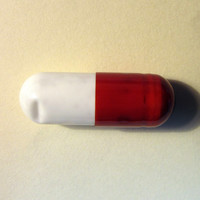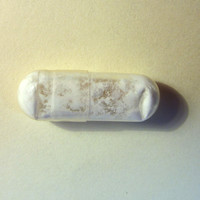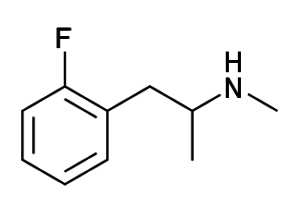2-Fluoromethamphetamine (2-FMA) is a phenethylamine and amphetamine that’s been used since around 2012. It’s a research chemical and little formal knowledge about the substance is available.
It’s been described as an alternative to amphetamine and lisdexamfetamine, albeit with a lower recreational potential. 2-FMA primarily offers productive rather than recreational effects. Most users describe it as less inherently recreational than amphetamine.
2-FMA = 2-Fluoromethamphetamine
PubChem: 24257263
Molecular formula: C10H14FN
Molecular weight: 167.227 g/mol
IUPAC: 1-(2-fluorophenyl)-N-methylpropan-2-amine
Contents
Dose
Oral
Light: 10 – 20 mg
Common: 20 – 40 mg
Strong: 40 – 50 mg
Most people find there’s little reason to go beyond 40-50 mg. After that point, the stimulation may increase and the duration could be somewhat extended, but the chance of negative effects increases.
Timeline
Oral
Total: 5 – 8 hours
Onset: 00:30 – 01:00
Most of the core effects tend to decline within 5-6 hours, but wakefulness can persist for 8-10 hours. Strong+ doses can extend the effects to some degree.
Experience Reports
Effects
Positive
- Stimulation
- Increased motivation
- Mood improvement
- Increased concentration
- Increased sociability
- Greater talkativeness
Negative
- Increased heart rate
- Dry mouth
- Appetite reduction
- Increased blood pressure
- Sweating
- Muscle tension
- Vasoconstriction
It’s largely a functional/productive stimulant rather than a euphoric and inherently recreational substance. Many users describe it as “clean,” with it being good for productivity and relatively free from negative physical effects. It’s not very “pushy.”
The effects have been described as “calm.” A lot of users find they can get the stimulation they’re looking for without feeling like they’re on a strong stimulant. Usually people don’t end up overflowing with energy to the point that sitting down and working is difficult, something that can occur with certain stimulants.
While you may be happier while on the drug, it’s not very euphoric. And even though it can offer an increase in motivation, becoming incredibly happy regardless of what you’re working on isn’t as common.
Some people have compared it to lisdexamfetamine. Both are fairly long-lasting and good for productivity at common doses. However, 2-FMA tends to have a lower recreational potential than lisdexamfetamine or amphetamine.
There haven been cases of people using it daily or near daily, occasionally as an alternative for prescription amphetamines. Since less is known about 2-FMA, this isn’t recommended.
The drug is typically more enjoyable and noticeable than modafinil, but they’re both more productive than recreational.
Negatives
As long as you take a common dose, it’s usually free of most negative effects. This means little to no jitteriness, noticeable cardiovascular effects, sweating, or anxiety.
With higher doses (e.g. over 50 mg), jitteriness, sweating, jaw tightness, muscle tension, and possibly heart palpitations can develop.
Comedown & after effects
Most users find 2-FMA leads to effectively no comedown or after effects when taken at common doses.
Strong+ doses can lead to some negative after effects, including transient low mood, low motivation, a flat affect, and even moderate depression into the following day.
Combinations
A combination known as the “Borax Combo” has gained some attention online. It can include various substances with the goal of offering an MDMA-like effect.
One of the combinations is 2-FMA, 5-MAPB, and 4-HO-MET. 2-FMA is largely just offering stimulation in that combo.
We don’t know how safe combining those drugs is, but if taken like MDMA (e.g. every few months) it’s probably not too concerning for healthy people.
Chemistry & Pharmacology
Chemistry
2-FMA is a substituted amphetamine. It’s a member of a group of fluorinated amphetamine derivatives, which also features substances like 2-FA and 4-FA.
Pharmacology
We don’t know its mechanism due to a lack of research. An educated guess is that it’s functioning as a reuptake inhibitor and releasing agent, particularly for dopamine and norepinephrine.
There could potentially be other actions, such as at VMAT2 and TAAR1.
History
August 2007
Four capsules were delivered to Royal Adelaide Hospital in Australia. The capsules appeared to have originated from Neorganics, an Israeli company that was selling drug-filled capsules worldwide under various brand names.
One of the capsules seemed to match up with a Neorganics product called Sub Coca 2. Upon examination, it was found to contain 2-FMA and a-phthalimidopropiophenone.
2013
It was reported to the EMCDDA only once before 2013 (in 2012).
Most user reports have appeared from 2013 onward, though it was on the market before then.
September 2013 – June 2015
Of 162 seized drug samples analyzed in Italy, 2-FMA was found in only a couple, making it quite uncommon.
2017
2-FMA is still on the market, but it hasn’t become one of the top research chemicals.
Legal Status
US (as of April 2017)
Uncontrolled
Controlled (list may not be complete)
China, Canada, Germany, and the UK.
Safety
As we don’t have much information about the drug, it’s difficult to say how safe it is, especially with long-term use. It’s wise to use the drug at common doses, infrequently, and without combinations.
The primary concerns people have mentioned are with cardiovascular and kidney health. Infrequent use of common doses likely isn’t an issue for healthy people.
Overdose
There aren’t any formal overdose cases to go on. However, 2-FMA could conceivable lead to hyperstimulation, anxiety, cardiovascular issues, and a higher seizure risk if enough is used.
Fatalities (combinations)
Case 1 (Karinen)
- Male in his early 20s
- Took 6 codeine/acetaminophen tablets
- He also appeared to take, according to his girlfriend, 3-MMC and 4-FMA.
- Those had been purchased online.
- He laid down after using the drugs.
- Within five minutes, he was snoring and it wasn’t possible to wake him up.
- His lips turned bluish.
- Paramedics called, failed to resuscitate.
- Despite him having used “4-FMA,” the retention time didn’t match upon analysis.
- 2-FMA was ultimately found instead.
- Toxicology
- Peripheral whole blood
- AH-7921: 0.43 mg/L
- Codeine: 0.42 mg/L
- Codeine-6-glucuronide: 0.77 mg/L
- Acetaminophen: 19 mg/L
- 2-FMA: 0.0069 mg/L
- 3-MMC: 0.0021 mg/L
- Peripheral whole blood
- TDC view: 2-FMA was probably a minor or entirely unimportant substance in this case.
Risky Combos (list may not be complete)
Other stimulants, psychedelics, MAOIs, and tramadol.
Test Videos
References
(2014) New phenethylamines in Europe.
(2014) Lethal poisonings with AH-7921 in combination with other substances.




















